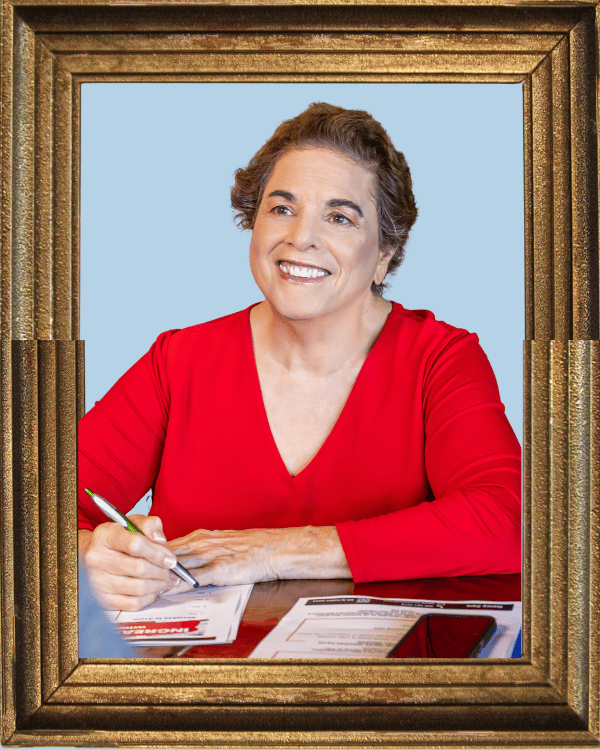- Private Practice Pointers
- Posts
- Private Practice Pointers No. 12
Private Practice Pointers No. 12
Effective Prioritization Strategies. Assess Before You Say Yes.
Table of Contents
Top 5 Effective Prioritization Strategies
Managing Complexity
by Mike O’Neill
If you have ever created a to-do list, then congratulations! You’ve taken the first step towards prioritization.
However, when you’re drowning under a pile of tasks, to-do lists don’t cut it anymore. It’s easy to list things you need to get done, but knowing where to start is difficult. You’ve noted what you must do, but how do you decide which ones should go first?
Prioritizing is a habit that you have to form. Choosing which tasks are more important than the others doesn’t have to be a stressful decision. It’ll take time to get used to strategies, but prioritizing will become second nature once you do. You’re setting yourself up for a productive day by prioritizing your workload. Stop wasting time wondering “which task is next?” and focus on one task at a time.
I've listed my go-to methods to help you decide which prioritization strategy is right for you. As an executive coach, I recommend these strategies to key executives in your shoes. In the end, it’s important to choose the strategy that works for you. Prioritizing isn’t as universal as jotting down what you need to do. Finding a strategy complementary to your work style will boost your productivity and focus. It’s how much you get done and how well you can prioritize.
Please read this article to find my top five highly recommended strategies and which works best for you.
Most Important Task
The Most Important Task methodology, or the MIT method, breaks down your to-do list into a manageable task load. Instead of staring at your endless to-do list, the MIT method focuses your tasks on the top three things you need to complete.
The purpose of the MIT method is in the name. Choose the most crucial tasks that need to be done. They will be the ones that have the biggest consequences or make the biggest impact on your work. At the end of the day, when your most important tasks are checked off, there’s nothing more satisfying than seeing a completed list.
So, where do you start? Well, the good news is, if you’re used to making lists, then this method will be something you’re comfortable with. Before you start your day, write down the three most important tasks. They could be tasks that have high stakes or tasks with upcoming deadlines. Either way, these three tasks will be your day's focal point.
Forget your to-do list because these are the only tasks you’ll do today. Your goal is to work on these tasks until they are completed. DON’T do anything outside of these tasks. Only having three tasks on your to-do list reduces the stress that longer lists do. The MIT method brings the focus to manageable sizes.
Decision Matrix
You'll love the Decision Matrix if you like tables and organizing things into neat boxes. This method is more than creating a list; it’s categorizing your tasks and reflecting on which tasks fit into which box.
The goal of the Decision Matrix is to focus on the importance of each task. Where the MIT method focuses on manageability, this method allows you to ask yourself, “Which tasks require my immediate attention?” or “Which tasks can I delegate or even leave off?” Here, your priority is lightening your workload and focusing only on tasks that need immediate attention.
Now’s the time to break out your Excel skills because this method starts with creating a four-quadrant table.
Quadrant #1: Your to-do list
It’ll be what is most important and cannot be put off to another day.
Quadrant #2: What can be scheduled to do
These tasks don’t need to be done today and can be finished another time.
Quadrant #3: Delegation
Think carefully about each task and who can complete it.
Quadrant #4: What NOT to do
Which tasks don’t need to be done and can be taken off the list.
You must follow the order of each quadrant. You’re not just filling out the information and being done with it; you’re reflecting on your tasks. This is your opportunity to practice your prioritizing skills.
Ivy Lee
Take your to-do list to the next level with the Ivy Lee method. This method focuses on six tasks and only six tasks. Like the MIT method, the Ivy Lee strategy creates a manageable list. However, the list is created with the highest priority task in mind and ends with the lowest priority task.
The objective of this method is to lighten your task load and give you direction in your day. Decision fog can affect your productivity when there are too many things to do. So, by minimizing your to-do list to six and setting the priority of each, you can tunnel your focus and be more productive.
At the end of your day, write down the six most important things you must accomplish for tomorrow. Then, prioritize them based on their true importance. Does it need to get done tomorrow? Can someone else do it? What are the consequences of not completing the task? The following day, you work down the list one by one. ONLY when the first task is done do you move on to the next. Repeat the process until the list is complete.
This method is great for staying accountable and focusing on one task at a time. You cannot move on to the next task until the previous one is finished, and by decreasing the priority of the task throughout the day, you will be able to focus on your priorities and reduce your stress throughout the day.
A B C D E
If you’re still struggling to understand prioritization, this list is exactly what you need. The ABCDE method breaks down your workload into manageable and neatly categorized pieces. It is very similar to the Decision Matrix but with smaller categories.
This strategy aims to make it easy to understand which tasks should take priority. By breaking them up into detailed categories, you’ll make your list easier to understand. Once you understand and can visualize which tasks are important, they’ll be easier to tackle, so you no longer have to guess which task comes next.
This method puts your workload into perspective. Don’t burden yourself more than you need to. All you need is a pen, paper, and your to-do list. Next, you’re going to conquer and divide. Organize your tasks based on these categories:
A = most important tasks
B = important tasks with consequence/deadline
C = tasks without consequences
D = tasks that can be delegated
E = uncategorizable tasks that can be removed
Eat That Frog
This method is one I use every day and one that I recommend to many of my clients. Attributed to Mark Twain’s “Eat a live frog early in the morning, and nothing worse will happen to you for the rest of the day,” this method focuses on getting the hard stuff done first.
The goal of the Eat That Frog method is different from the other methods because you’re not only focusing on the most important task but also the one that is the most difficult. By starting on the hardest task first, you can work and complete the task when your mind is still sharp.
Start your day off by identifying your frog. This is the hardest or most important task. Only choose ONE. If both tasks are important, choose the “ugliest” one. This can be the task that will take longer or the one that takes more steps to finish. Ultimately, it’s your frog, and you’re the one that will have to finish it.
The main objective is choosing one task and focusing on it until it’s completed. Then, you can move on to the next one.
Just like ripping off the band-aid or eating your veggies first, this method focuses on the “do it now, not later” mentality. If you push the task off until later, you’ll be tired or more stressed than if you did it in the beginning. This method is perfect for people who work better by focusing on one task at a time.
The Right Method
Remember: choose the method that is right for you.
Having a prioritization strategy is important for compressing all the tasks you're juggling and managing your workload. Knowing which tasks need to be done and doing them little by little will help boost your productivity and focus your day.
However, choosing a prioritization strategy is the first step in managing your tasks. Time management is equally important and necessary to organize your day fully.
Assess Before You Say Yes
When starting a business, some attorneys tend to work with any (and all) people who are willing.
After all, your practice is new, and you’re eager to bring in revenues.
This may also happen when you’ve been in business for a while.
You often say “yes” before assessing whether it’s a good fit for you.
Last week, I met with a prospect struggling to close sales.
Charles wants to grow his business and needs to gain skills in communicating his services.
As a strong Number 8 personality or buying style, he takes his time to gather information and contemplate what to do.
Before making any buying decisions, he needs scientific evidence and a clear understanding of how my approach will benefit him financially.
His slowness in processing information and lack of action make him a poor candidate for me.
Yet, he’s interested and wants to improve his sales skills.
How did I respond?
Fortunately, Number 8 Buyers are do-it-yourselfers. They love to read, and I have a series of books that contain the concepts I promote.
If he asks for more, I’ll suggest my video course.
And if he still wants personal instruction, I’ll refer him to a colleague who may better match his style.
For me, Charles is not an ideal client.
You are not the right match for everyone who needs or wants your services.
Assess before you say “yes.”
Like 70% of the population, Carol is a combination of two different styles.
She has a social style, which is very personable, outgoing, and caring, while her professional style is ambitious, directive, and fiery.
Without regard to style, she reached out to potential referral sources who differed markedly from her traits. They tend to be reserved, thoughtful, and conservative.
She processes ideas quickly.
They take their time.
She reaches conclusions quickly.
They have to think about it.
She’s eager and ready to go forward.
They want to do research.
To gain their endorsement, she has to curb her natural inclinations.
Could she have chosen the wrong referral partners?
TIP: Assess before you say yes to working with people whose style may be at odds with yours. It takes more effort, increases stress, and leaves you feeling frustrated and unfulfilled.

